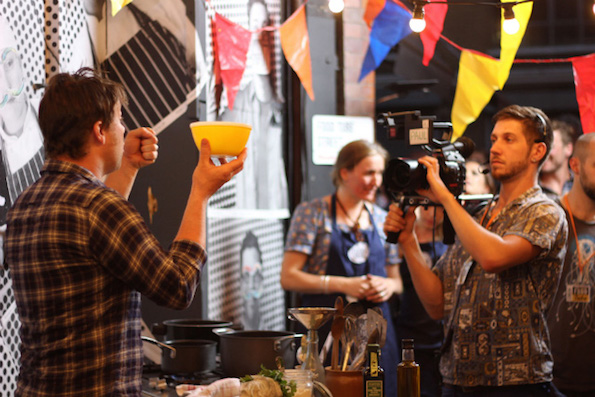An interesting article on The Science Of Why You Should Spend Your Money On Experiences, Not Things explains why our happiness is guided by experience, not some sort of material possession. It’s a good lesson for content marketers who often get focused on a specific piece of content but forget about how it affects their audience.
What do you put value on?
An experience connects us with others, prompting conversation and a platform to share insight and opinion. According to Dr. Thomas Gilovich, psychology professor at Corness,
‘We consume experiences directly with other people. And after they’re gone, they’re part of the stories that we tell to one another.’
Think about a momentous occasion or happy memory. Chances are it will be based on an experience involving other people, like a holiday, rather than the moment you brought home a new TV. For the latter, the enjoyment is short-lived; you love your new 40” but it becomes part of the furniture. Happy memories from travel will evoke enjoyable emotions for a lifetime and retain that connection with those sharing those moments with you.
How this relates to content marketing
Content marketers are realising that to retain their audience and attract potential customers, they must offer more than a product or service. They must offer a value-add experience capable of aligning with the daily routine of the consumer without disrupting their lives and becoming a nuisance. The experience must always remain beneficial and positive. It’s interesting to see how marketing methods have evolved over the years. It doesn’t seem too long ago disruptive advertising was commonplace – you know the kind, a guy on the TV, usually the owner of a business, shouting at you to buy his top-quality rug.
Here’s a typical example of disruptive advertising with a lot of SHOUTING:
Cillit Bang universal stain and drain advert
Take a typical promotional video selling a product. A customer may watch it once then forget about it. But what if the video was complemented with a blog packed full of tips and inspirational ways of using the product? You could produce a step-by-step guide for using the product and a series of short ‘how-to’ videos as a tool for the consumer.
The product now offers a whole package of content targeting your audience through various avenues, allowing the customer to select information through their preferred method.
In this scenario, the customer is offered additional value and acquires a wealth of useful and relevant information. Ultimately they become immersed in the brand experience. As Jim Joseph says in his article, ‘How to Build a Brand Experience for Customers,’ you quickly establish loyalty with your audience if you offer an experience.
‘The more compelling the experience, the faster you will build brand loyalty,’ says Joseph.
Examples of meaningful brand experience
Offering brand experience could be as subtle as an email mail-out or as extravagant experimental marketing as a good old-fashioned PR stunt.
Here is a great example of creative experimental marketing. (Find more examples in our post, Take the plunge into content marketing.)
North Face experimental marketing
Case study
British Chef Jamie Oliver has an incredible marketing team creating a suite of content assets around his brand.
He doesn’t focus on selling but instead on educating and inspiring his audience. He provides tools to explain how to get involved and become part of the Jamie Oliver experience, including:
- easy step-by-step guides
- blogs
- YouTube instructional videos
- social media posts
He openly shares his knowledge of food and offers insight and wisdom from experts around the globe.
Oliver doesn’t preach; he doesn’t over-complicate. He simply shares what he has learned and makes it relatable to the audience. His ability to continually provide a fresh experience has created a community and brand presence in the cooking world.
Where businesses fall short
Creating a brand experience may seem like a daunting task but it’s not difficult finding the content. Many businesses have content but just don’t use it. Creating a suite of content assets can be exciting, but you must have professional guidance and a credible agency that knows your brand.
The hard part is keeping the content updated and the experience fresh for your audience. This means your content should not be published once then forgotten; it must be refreshed and repurposed. Read more about recycling your content assets. Get in touch to find out how you can stay front-of-mind and maintain brand presence.
When have you had a positive brand experience?
Image credit: Jamie Oliver: Really short ‘Jamie Oliver in Union Square’ on Flickr
Image credit: Torley: Alchemy Immortalis Bed & Breakfast Experience on Flickr










